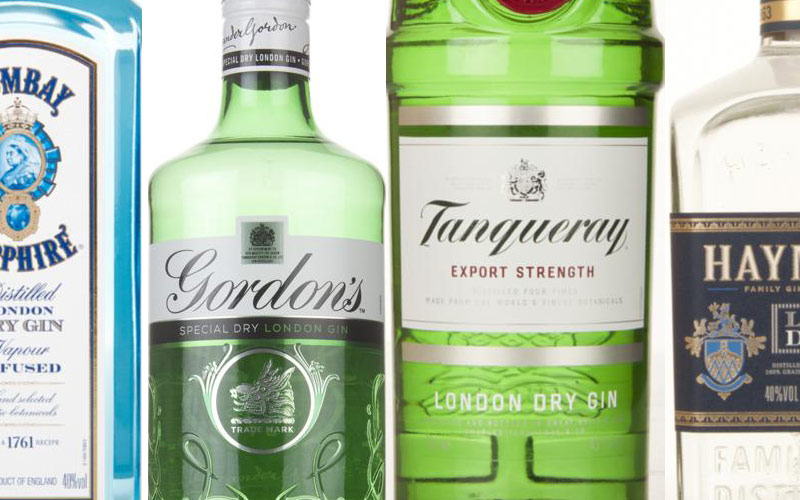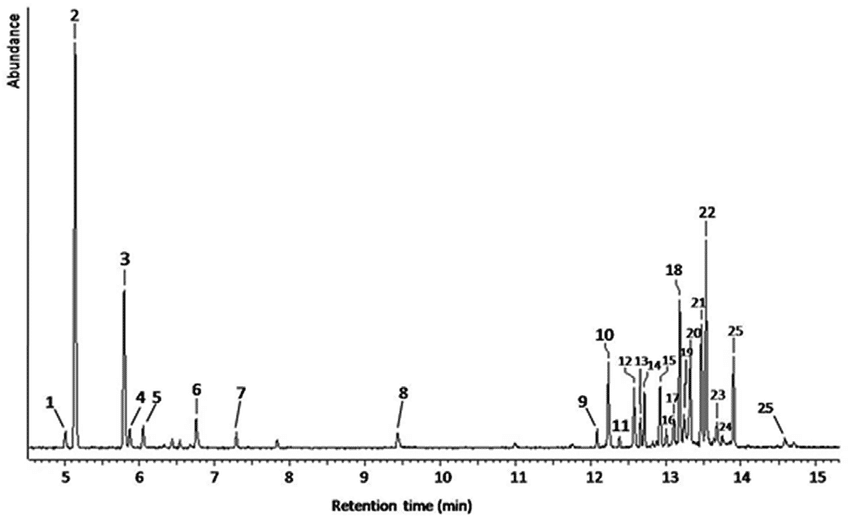In 2019, the European Union collected feedback from consumers and the distilling industry to help clarify its meaning. Though there are some changes in the new 2019/787 legislation since amended under 2021/1465, though the act in effect in the U.K. is the one that was when they left, the core of the matter has not changed.
Historically the term London Dry Gin has been a quality control designation and not a flavor designation. The term London Dry Gin is still a process designation. Though some efforts have been made to add clarity to the defining the flavor of gin, they continue to remain subjective and largely unenforceable.

The Details on Distillation
The purity standard of the base spirits has its origins in the 18th and 19th centuries. Gins were being distilled from all sorts of grains, some wholesome, some were destined to be waste. The grain spirits were often rough, and often were sweetened or otherwise adulterated to make them palatable.
The invention of the continuous column still made it easier for distillers to create clean, high proof spirits. A wine in a pot still may be close to 50% alcohol vapor, but that same wine in a column still can reach 96%, the limit able to be achieved through distillation.
Firstly, a “London Gin is Distilled Gin” (p. 41). Distilled Gin has its own set of requirements.
Section 21.a of Regulation 2019/787 requires a distilled gin to be made with the following:
The base spirit must be of agricultural origin. Secondly, it must be distilled to an “initial alcoholic strength of at least 96%.” In essence it says, “the base spirit must be distilled in a column still and be completely and truly neutral.”
The truly neutral base spirit is then redistilled “in the presence of Juniperus communis L. and other botanicals.”
Furthermore, “the combination of the product of such distillation and ethyl alcohol of agricultural origin with the same composition, purity and alcoholic strength; flavoring substances or flavoring preparations as specified in point (c) of category 20 or both may also be used to flavor distilled gin”
This clause means that gins like Martin Miller’s or Hendrick’s which add flavoring elements after distillation are still considered distilled gins as the first two steps are true. It further codifies that the “concentrate” method of distilling— where a distiller runs a super intense botanical run and then dilutes it with neutral spirit to appropriate intensity— also still qualifies as a “distilled gin.”
You can add flavoring and neutral alcohol to a distilled gin.
Further, a distilled gin may be designated as “dry” if it does not add more than 0.1 grams of sweetening products per liter.
Again dry means that a gin is (for the most part) unsweetened.
The ‘London Gin’ designation
The London Gin designation adds some additional quality focused regulations.
Firstly, all of the spirit involved, whether part of the initial distillation or added after the fact, must have fewer than five grams per hectoliter of 100% alcohol.
Aside: What is Methanol (and why do we care?)
During fermentation, both methanol and ethanol are produced. Proper distillation removes the methanol.
Methanol is toxic and sometimes referred to as “wood alcohol,” in reference to one common fermentable that produces it: wood. If you ever wondered why we no one distills wood, this is why. It’s poison.
Methanol boils at 64.7° Celsius. Ethanol boils at 78.2° C. And water naturally does so at 100° C. Methanol tastes and smells exactly like regular ethanol. This means that unscrupulous distillers (again, particularly in the 18th and 19th centuries) might add some of the methanol to their ethanol to increase their yield.
The London Gin specifications are a guarantee of quality that the spirit you’re drinking doesn’t have methanol in it. This isn’t so much a problem in the modern day. Even distillers without the designation are meeting reasonable standards for methanol content and disposing of their heads accordingly.
Further, the London Gin designation specifies that the resulting distillate after distilling the 96% ABV neutral alcohol with juniper must come off the still “at least 70% alcohol by volume.”
London Gin must not be colored in any way shape or form. This means no butterfly pea flower gin can be London Dry.
It may also be made as a concentrate. Distillers are permitted to dilute the concentrate with neutral spirit (and water), as long as it comes off the still at 70% ABV or higher, and the added spirit meets the ABV and methanol requirements.
All botanical flavor in a London Dry Gin must be imparted through distillation.
Finally, though a distilled gin may be dry, a London Gin is codified that it must be dry. “It is not sweetened in excess of 0.1 grams of sweetening products per liter of the final product, expressed as invert sugar.”
In other words though 2019/787 doesn’t define “London Dry Gin” it defines London Gin such that all London Gins must also be dry gins.
Aside: Why Define “London” and not “London Dry.”
This is one of the most peculiar aspects of the wording of the European Union regulation. As late as 2015, there were efforts to afford the term the highest level of protection: GI status.
However, GI Status is onerous and requires highly specific technical files that specify the process down to an exact process. For example, the Gin de Mahon technical file specifies botanicals, maceration times, and exact distillation details.
It is unlikely that the wide range of distillers currently using the term “London Dry Gin” share enough similarities in their process— or were willing to disclose so much about their process to win the more stringent Geographical Indication protection.
In essence though, the current legislation is a de facto encoding of the term “London Dry Gin” without having to appeal for a more prestigious protection that would likely have resulted in many “London Dry Gins” losing the ability to use the term.
Standards for botanicals
The vague taste standards specified under previous European Union spirit drinks regulation in part led to why so many gin distillers wanted to recodify gin law.
However, there are no improvements. The vague “predominant flavor” clause remains.
Gin is defined under 20.c: “Only flavoring substances or flavoring preparations or both shall be used for the production of gin so that the taste is predominantly that of juniper.”
Distilled gin refines it under 21.a.i: “in the presence of juniper berries (Juniperus communis L.) and of other natural botanicals, provided that the juniper taste is predominant.”
London Gin inherits both of these clauses and refines it further to exclude any gin which adds flavors after distillation. “the flavor of which is imparted exclusively through the distillation of ethyl alcohol of agricultural origin in the presence of all the natural plant materials used.”
Again, I find it fascinating that the vague term “plant” is included. Technically speaking this means that a gin such as Radoune which uses mushrooms could not be considered a London Gin (mushrooms are fungi, not plants).
Further the “exclusively through” clause means that Portobello Road’s Directors Cut Pechuga-style London Dry Gin would no longer be afforded the “London” designation. Their pechuga is made by suspending raw meat in the still which is cooked through the distillation process, and whose flavor is imparted by vapor infusion. Meat, being from animals rather than plants, would also be excluded from London Gins.
This clause was present in the 2009 guidelines as well; however, it is not clear to what extent this will be enforced, given its rarity.
This does not mean that London Gin is vegetarian. The agricultural origin of base spirit is sufficiently expansive to include fermentable animal products like milk and whey.
This means that any flavors, macerations, or botanicals added after final distillation disqualifies a gin from being called a London Dry Gin. Several notable gins including Martin Miller’s Gin and Hendricks Gin are often mistaken for London Dry Gins. However, both Miller’s adds cucumber and Hendrick’s adds that and rose after distillation. Therefore, they cannot bear the name “London Dry Gin.”
Aside: How don’t these regulations specify flavor?
The choice to use the vague language of the old European Union spirit definitions caught many off guard. It is technically possible to evaluate flavor using laboratory apparatus. Some distilleries like Laverstoke Mill (home of Bombay Sapphire) use Gas Chromotography to identify volatiles in their gin.

They can compare the results of a new run against a standard-bearer. The job of tasting and quality control is often still the job of a master distiller; however, technology has afforded distillers another tool for ensuring consistency across batches.
Although the cost of this kind of lab work has declined dramatically in the last twenty years, it may still be too expensive for regulatory agencies to apply and too onerous for distillers without labs to design new products that meet a chromatogram requirement.
In short, it’s surprising that more concrete steps weren’t taken to address the “predominant” flavor problem. Until some numerical measures are added to the law, it remains subjective and largely symbolic. As of 2022, the key takeaway is that nearly nothing has changed in terms of the flavor of London Dry Gin is defined.
My guess would be that if distillers continue to confuse consumers, causing consumers to request more regulation: this is likely the future of gin designations.
Why is sweetening allowed in ‘dry’ gins?
When you catch the note about sugar in the London Gin specifications, it often catches people off guard. The word “dry” emerged to describe an unsweetened gin. Why would that be allowed?
In short, the sugar permitted by law is not necessarily used for sweetening, it’s primarily used for tracing. If London Dry Gins were prohibited from adding any sugar, the tracer molecules used by many big companies to deter counterfeiters would be prohibited. The dye is described as a “sugar dye,” and is present in brands, including Gordon’s Gin, seen by many as the quintessential London Dry Gin.
Around the world
London Gin is codified in the European Union spirits regulations; however, in the United States the terms specified by the TTB are a bit more inclusive and don’t use the word “London.”
“Spirits with a main characteristic flavor derived from juniper berries produced by distillation or mixing of spirits with juniper berries and other aromatics or extracts derived from these materials and bottled at not less than 40% alcohol by volume (80 proof)” [source]
TL;DR London Dry Gin
Going through the terms of the regulations regarding London Dry Gin, it’s worth noting that it says nothing concrete about flavor. A London Dry Gin can be either contemporary or classic in style. It’s perhaps one of the greatest misunderstandings about the term.
The second thing about the term is that it does not tell you anything about place. It does not mean the gin was made in London or ever was made in London.
It’s neither about place nor about taste. It’s only about process.

Very good explanation, my freind created a very good London Dry Gin and wanted to know more about it. thank you very much for your info.
So good i have my bottle for 7 months and still can’t find a celebration good enough to open it
London Gin doesn’t have to be 95% Alcohol as far as I can tell. It’s 70%.
From Regulation (EC) 110/2008
ANNEX II:
22. London gin
(a)
London gin is a type of distilled gin:
(i)
obtained exclusively from ethyl alcohol of agricultural origin, with a maximum methanol content of 5 grams per hectolitre of 100 % vol. alcohol, whose flavour is introduced exclusively through the re-distillation in traditional stills of ethyl alcohol in the presence of all the natural plant materials used,
(ii)
the resultant distillate of which contains at least 70 % alcohol by vol.,
It is great blog post. Helpful and Informative blog. I am always read your blog. Thanks for sharing these information with us.
This is all well and good, and there are some good points raised, but the fact remains that ‘predominant’ means exactly that, not hidden, or almost totally undetectable, but obvious to the point of being unmistakable. I cannot see any other interpretation of that, however hard some might try to make that point. The problem as I see it, is that the horse has already bolted. A simple case can be made against those gins that are not predominantly flavoured with juniper, but who is going to do that? For me the push for GI status is the right way to go, no matter how difficult that may be for some distillers to accept. What do distillers see in the term LDG that is so valuable these days anyway? I think the term has long since lost any credibility, with gins made using concentrates and diluting with neutral spirit, distillers using micro batches of distillates to ‘correct’ batches of LDG that are for some reason inconsistent, and so what value is there in the term, unless it has GI status or some other strictly adhered to process rules? Hendrick’s and Miller’s are good examples – they aren’t LDG and do you think they care? They sell millions of bottles every year, and not being LDG makes little/no difference whatsoever.
I am from kerala India.recently I purchased london dry gin which don’t have alcohol bottle stopper.is it original or duplicate.
If botanicals are individually distilled and blended after distillation, can the gin claim to be a London Dry Gin?
Dear Madam or Sir
Is it possible to blend 2 or more distillates. Made of the exactly the same recipies and distilling equiptment. To get a bigger batch before you dilute it with water and then fill it on bottles?
I’ve always been a fan of gin, but I never knew about the difference between London Dry Gin and other types. Thank you so much for breaking it down in this post! I especially loved the section on production methods, it really helped me understand what makes London Dry Gin unique.
wowww good post.. Thank you very much
I wish you had dealt with the difference between using ripe juniper berries as opposed to dry berries. I can always tell when green berries were used. Such gins taste strong and toxic to me.